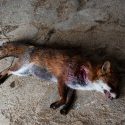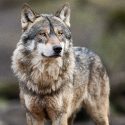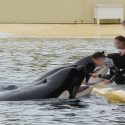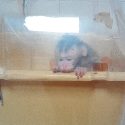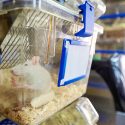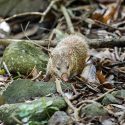Animal experimentation is still resisting change: 2022’s detailed figures
Animal experimentation is still resisting change: 2022’s detailed figures
23.01.2024
France
Animal experimentation is still resisting change: 2022’s detailed figures
Animal testing
The detailed figures for 2022 have been provided by the Ministry of Research at One Voice’s request. While a few rare uses continue to decrease, the situation for primates is very concerning, the production of antibodies is rapidly expanding despite European recommendations, and tests on the nervous system (in particular involving chronic pain experiments) are using three times more animals than in 2015.
Each year, we have to request the complete file of laboratory declarations, which is much more detailed than the “statistical survey” published on the ministry’s website. And each year, we see the same thing there: almost nothing changes.
The good news: regulatory tests are decreasing
If we can find some good news within these figures, it is the continued decline of a particularly widespread type of use (the verification of “potency testing”), whose number has number decreased by two thirds between 2015 and 2022. This is because alternatives for this use have been increasing for at least twenty years. The huge reduction in this field has therefore led to these regulatory tests decreasing by half in seven years, which gives hope.
However, the industry has found it hard to adopt these substitution methods, which explains why almost 50,000 animals suffered from them in 2022. And animal experimentation is not limited to mandatory tests, with new ones in other fields being ever more concerning.
Rabbits and mice never stop suffering
Rabbits are the first victims. Unsurprisingly, they continue to endure “pyrogen” tests, which are disappearing very slowly despite valid alternatives having existed since 2005. But above all, the number of rabbits has continually increased over the years. The cause: exploiting their bodies as biological factories serving solely to produce antibodies.
As for mice, the cruel ascites method involves filling their abdomen with air, injecting it with products, and killing them to retrieve their antibodies. In the European Union, France
is almost the only one doing this. If truth be told, the European Centre for the Validation of Alternative Methods (ECVAM) has condemned this method for twenty-five years
due to the fact that other solutions exist, and once again called to put an end to it in 2020. But this did not stop France from increasing the number of these uses again in 2022 and from continuing to authorise the use of tens of thousands of rodents in recent weeks, with a vague mention of an imagined decree in 2030!
Mice are also the main ones affected by the unprecedented increase in experiments on the nervous system, which specifically involve exposing animals to chronic pain that is sometimes associated with anxiodepressive symptoms. Despite our requests, the ministry persists in qualifying this suffering as “moderate”.
Primates captured in France?
Yet more strange or even revolting: twenty brown lemurs were used in a “moderate” experiment for “species preservation” and noted as “F0” – they are, or were, free primates. The description of the project, found on the national Natural History Museum’s website, talks about the difficulties of cohabitation between farmers and monkeys in Mayotte. But it says nothing about what has been done with the individuals captured for this test…
One Voice is continuing its work to understand how such a use, theoretically illegal, took place. When it comes to the difficulties in verifying the reasons put forward by public authorities on the huge increase in figures in 2022, we have not had a response from those involved.
While waiting, you can consult our specialised website, which we will update as soon as possible with the details of the new data described here.
Translated from the French by Joely Justice

